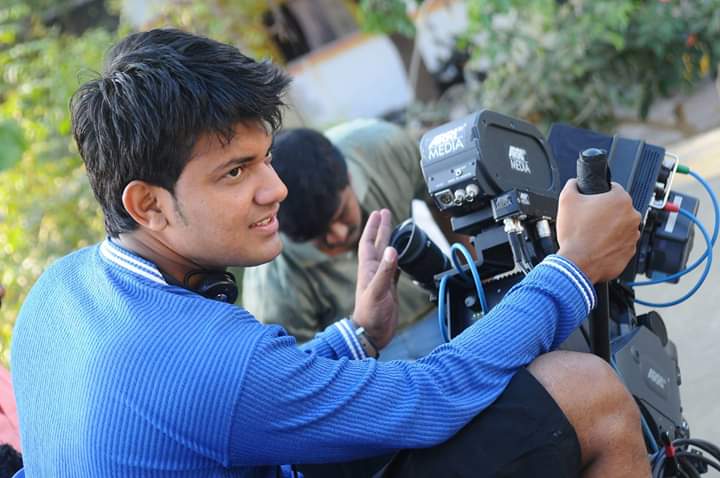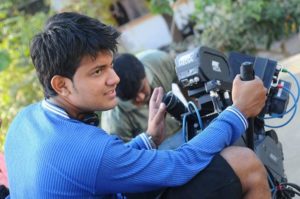
In conversation : Laxman DOP
Apr 04 2020
J.Laxman is one of the youngest Dops to shoot both in film and Digital.

A mechanical engineer passion towards photography drived him to have a short term course on Photography…then he went on to assist popular Dop Rathinavelu and again he joined Mind screen film institute.
Then his debut film Venila kabadi kulu became one of the trend setters in Tamil film.
Currently Laxman serves as a Excecutive committee member for SICA.

In conversation Laxman shares his specific views about his career.
1) Why are you using MFI behind your name ?
When I was studying in the institute , i got interaction from all great cinematographer’s who turned as Master’s . They all maintain a very good personal attire that they are recognized as cinematographer’s where ever they go. So, that showed their professionalism and that inspired me to add my institute abbrevation to my name , so that it creates a feel that i’m a cinematographer.
2)Being an urban guy , how did you manage to shoot in a village for “Vennila Kabadikulu”?
I wanted to do a project in a village background and I studied all sorts of technical knowledge by research on choosing the tone for the film including the costumes , makeup of artist’s etc. So, when Director Suseendaran approached me I was ready to shoot the film in the mood that I and director wanted it to be .
3) What is the difference b/w different types of lenses ( master prime , ultra prime , CP2,CP3 etc)?
Each lenses have their own behavior , we should always do a research on what lens suits for certain films or moods and then decide on which lens to be used.
4) Many legend Dops would always say ” lens must be new” ? What is your view on it?
The quality of same type of lens itself would differ from dealer to dealer we are hiring from , so we have to make a proper testing before finalizing the lenses for shoot.
5) Why you shot “puthagam” in sony F65 camera leaving behind ARRI?
I was opting for a viewfinder which does not have an optical corrections , so in that time, Sony came with their F65 camera . I did some test shoots with the camera and then used it for PUTHAGAM as i was satisfied.
6) What is the difference you noticed in sony F65 compared to ARRI in terms of colour reproduction?
Sony cameras generally have high contrast Compared to other competitors and it must be predicted and handled carefully or else it will blow out colours dynamically.
7) How do you light up a scene or the technique u follow ?
I will light up the exterior from highlights to shadows and do reverse lighting for interiors ( shadows to highlights).
8) Does lighting should be done according to makeup?
Yes, Cinematographer must get involved in the makeup of the artists , so that we can light it according to the level of makeup or tone of makeup given .
9) How was your experience in using ARRI D21 as a first cinematographer in India?
ARRI D21 was compact compared to previous versions from ARRI . It had a separate audio recording until . It did not have histogram , waveform and all , it has to be predicted carefully and used. I ran a complete test shoot with that camera from which Santosh Sivan sir utilized for his film “Urumi” .
10) What lens did you use for Vennila Kabadikulu?
I used Cooke s4 i lenses as I wanted to cut of flare ..because i was using practical lights inside the frame and to produce that particular look an sports film happening on dirt has to be visualized.
11) What will you do to proceed the shoot fast and maintain the quality of light and tone ?
I would divide my assistants into two teams . One team will read the zonal systems with greycard, light metres and another team will always carry on with setting up lights using diffusers , flags etc.
12) What all reports will you take while shooting so that it might be helpful for post production or next film ?
I have 2 Assistants who always take the camera readings – F stop , colour temperature , light metre reading for each and every scene or shot and also they note the type of lens used and it’s focal distance operated for each shot. This will be very helpful to analyze during post or before next project.
13) Could you tell the students, what they have to follow to be Successful cinematographer ?
During one AD shoot with Rajeev Menon sir as director , a foreign cinematographer was hired . His observation on lights was very good and that made him to do lighting very perfectly which delivered an extraordinary result unlike following the old school method of placing vapour sheet light on top ( inside the car).
14)Why did you join the film institute after working as an Assistant cinematographer alongside some popular DOP’s?
I strongly believe that having a theorytical knowledge is more important because it would help us to implement creative ideas and work very efficiently on the field. so, going back as a student and start learning from the basics was my ideal choice .
15) What is the best way to learn composition ?
The cinematographer must have good photographic skills where we get to know more about compositions and the same basics is applied in cinematography while shooting a close up or wide landscape scene etc .
16) What is your preproduction homework ?
We would get a bound script from the direction team and start our planning . Our planning includes following home works :
A) Short divisions
B) Story boards
C) Look test of characters
D) Hands on the equipment
to be used .
17) How will you visualise 24 frames in cinematography compared to single frame in a photograph ?
The single frame you see on camera and how other 23 crafts work together is called 24 frames.
18) Who is your favorite author?
I admire Ansels Adams photography and read all his books.
19) How to avoid nervous at the start of first day of shoot ?
Everyone gets nervous before starting the first day’s shoot and to avoid that we can start the shoot from lighting the interior scene.
20) What is you advice to students to follow in order to become a successful cinematographer in future?
A) Read more books
B) Update yourself on latest technologies and equipments.
3) Read the script as many times possible
4) Test the camera and lenses before shoot.
Article compiled by : Rohin Senthil
Edited by : CJ Rajkumar Author/ Cinematographer
